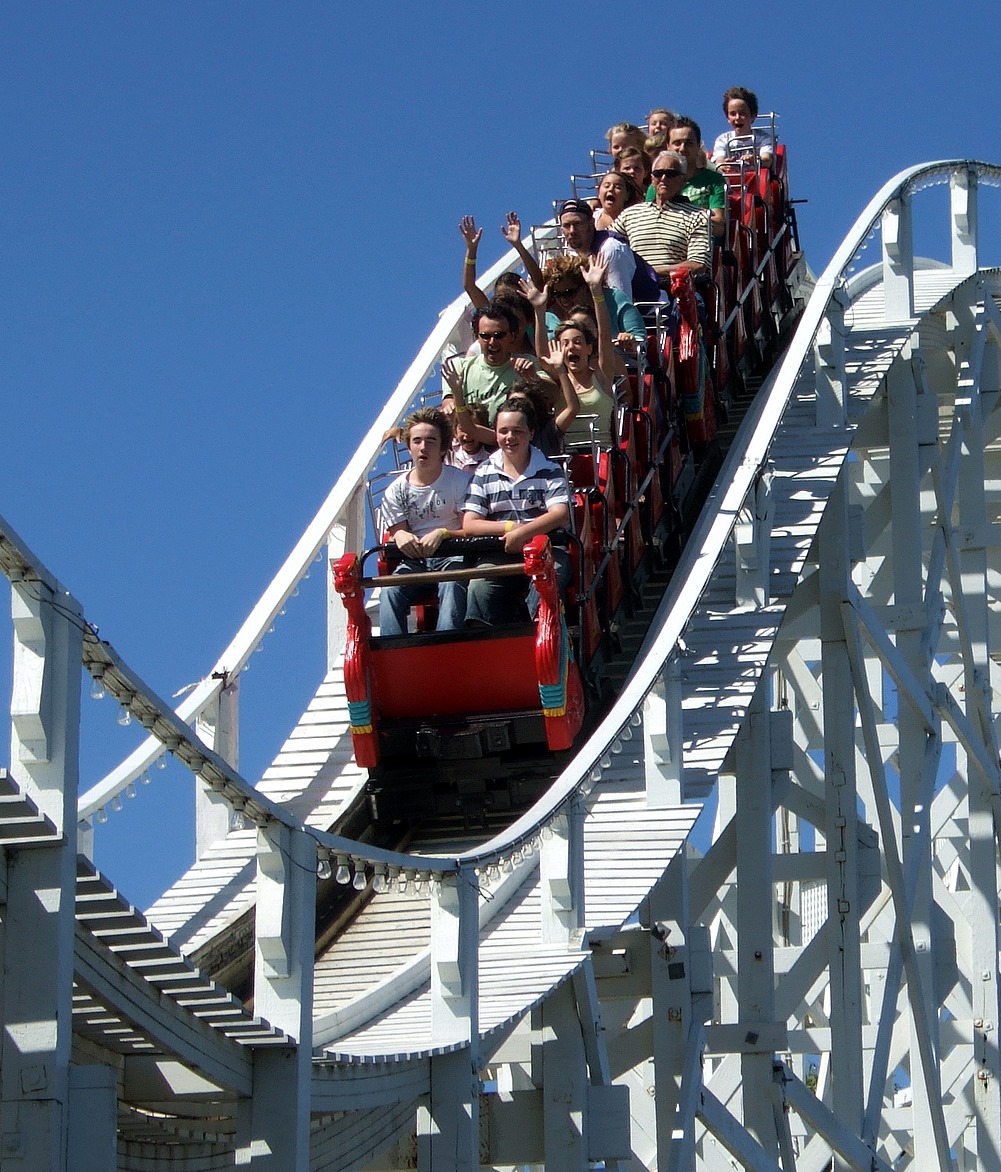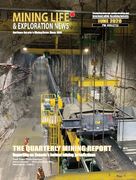Rise and Fall and.... Rise of Gold?
 Gold has undergone an epic journey over the years. Wars have been fought for gold. Explorers have crossed oceans and marched across vast continents to find it. Pirates chased gold bearing ships to steal it. Ancient empires built temples to the gods.
Gold has undergone an epic journey over the years. Wars have been fought for gold. Explorers have crossed oceans and marched across vast continents to find it. Pirates chased gold bearing ships to steal it. Ancient empires built temples to the gods.
As Pindar the 5th Century B.C. poet viewed it "Water is best, but gold shines like fire blazing in the night, supreme of lordly wealth."
One thousand years later Christopher Columbus said "Gold is a treasure, and he who possesses it does all he wishes to in this world, and succeeds in helping souls into paradise."
Today governments, national banks, investors buy it, horde it, sell it and trade it on the open market.
Exploration companies use the latest hi-tech approaches to find it. Will mining companies invest hundreds of million and even billions of dollars to extract, refine and produce gold.
Gold production is sold for a variety of uses including in jewellery manufacturing, electronics, dentistry, but most frequently as storehouse for wealth. Gold has for millennia been the standard for value and wealth in our society.
Gold’s Price Cycles
Those interested in the gold industry from miners to investors are familiar with the roller coaster cycles of high and low prices that the precious commodity has experienced since the mid- 1970s. Today many are trying to figure out if the declining price of gold has reached bottom in anticipation that a level of price stability will be achieved so that in time the roller coaster will shoot up from its present low to climb to another peak.
For centuries the price of gold has remained stable and retained the same value from 1792 to 1968. The U.S. gold price changed only four times during those years starting at $19.75 per troy ounce in 1792 it was raised to $20.67 in 1834; $35.00 in 1934. In 1972 it was $38.00 and in 1973 $42.22. In 1968 the price of gold has been free to fluctuate according to market demand. Since then gold has gone through cycles of meteoric rises and dramatic collapses.
Since the 1970s and to the present gold has seen its shares of ups and downs. From 1970s to 1980 gold increased in value from $30 per ounce peaking at US $615 in 1980. A sum unimaginable 100 years earlier when it traded for US $18.94 dollars for ounce.
However, by the 2001 gold's price had settled to a lowly US $271 per ounce. At that time the gold crowd wondered as they are wondering today - how low would gold go?
21st Century Gold Boom
But fueled by post 9/11 global uncertainties, declining weakness of the US dollar, inflationary war spending of US wars against Al Qaeda in Afghanistan, and Saddam Hussein in Iraq, a funny thing started to happen to the price of gold. It started to climb upwards from $271 per ounce until it reached US $1818 in August, 2011.
In response to seemingly unstoppable surge upward numerous gold mines were opened. May of the new operations opened in the remnants of old mines that were shut earlier when it was uneconomical to operate at the lower prices of the 1990s.
The record price of gold meant that once unprofitable mines now were profitable. New mines re-opened where previous operations had a decade or two earlier had closed.
In Northern Ontario mines opened to take advantage of the increasing price of gold. Detour Gold, Kirkland Lake Gold, AuRico Gold and Lakeshore Gold. In Quebec  Osisko opened its gigantic Malartic mine,
Osisko opened its gigantic Malartic mine,
The U.S. recession of 2008 spurred the surging gold prices even higher. Some experts were writing about gold top $2,000.
The Price of Gold peaked at US $1818 on August 18, 2011 and dipped to $1604 on June 29, 2012. This occurred after the announcement by U.S. Fed chief Bernard Bernanke that quantitative easing the pumping of billions of dollars into the US economy annually would end.
Gold Prices Tumble
It bounced back to $1724 on Oct.12 and since then has been cascading in fits and starts until it fell below $1200 in 2014. During that time it has fallen as low as $1160 and today sits at $1180.
During the period when the price of gold began declining some companies were facing economic crunches. For example, takeovers occurred Agnico Eagle and Yamana gold purchased Osisko after a hostile bid failed by Goldcorp. Over-leveraged companies like Detour Gold summarily dismissed their founding President and CEO.
Today companies are hedging their bets on increased production and lowering production cost. The strategy works as long as buyers are still buying gold. The lower selling price may attract buyers and the lower costs will keep the gold mining companies profitable.
2014 3rd Quarter Performances
A review of several gold mining companies third quarter 2014 performance shows most have experienced losses despite increased production.
Agnico-Eagle
Agnico Eagle for example reported a quarterly net loss of $15.1 million, or a net loss of $0.07 per share for the third quarter of 2014, despite its Canadian Malartic mine achieving record quarterly mill throughput and productivity. It’s mill processes an average of 52,539 tonnes per day with cost per tonne below budget and its top end of 2014 production guidance are expected to be achieved or exceeded.
Production for 2014 is expected to be approximately 1.4 million ounces more importantly Agnico-Eagle has reduced its cash cost from $675 to $650 per ounce.
Agnico-Eagle’s stock performance reflects its 3rd Quarter performance. It reached a yearly high of $45.92 in July, but lost almost half its value when it fell to $25.05 on October 31, 2014. Today it is trading at $29.96
Detour Gold
Detour Gold experienced a net loss of $0.8 million or nil per share and an adjusted net loss of $16.5 million or $0.10 per share. This was quite an improvement over its 2013 3rd quarter. Revenues for the third quarter of 2014 was $135.9 million on gold sales of 106, 334 ounces. Cash cost was $941 per ounce sold compared to $1,214 during the third quarter of 2013.
Detour’s stock price have stabilized. After the resignation of founding President and CEO Gerrard Panneton Detour’s value fell to $2.88 before rebounding to $15.62 on June 23, 2014. Today it is trading at $ 9.62
Goldcorp
Goldcorp reported a net loss of $44 million, or 5 cents per share, in the third quarter, compared to net earnings of $5 million, or 1 cent per share, in last year’s comparative quarter. The company produced 651,700 ounces of gold in the third quarter at all-in sustaining cash costs of $1,066, with gold sales totaling 641,400 ounces in the quarter.
Goldcorp’s stock value in 2014 ranged from a low of $19.18 on October 31, 2013 and a high of $32.46 on March 14, 2014. Today Goldcorp is $23.62.
Primero
Primero Gold incurred a net loss of $105.9 million ($0.66 per share) in Q3 2014, including a goodwill impairment charge of $99.0 million relating to the Brigus acquisition, compared to net income of $10.1 million ($0.09 per share) in Q3 2013.
Primero has increased production and reduced costs. The company produced a total of 59,673 gold equivalent ounces in Q3 2014, a 42% increase compared to 41,998 gold equivalent ounces in Q3 2013. Gold and silver production was 51,464 ounces and 1.41 million ounces, respectively, in Q3 2014 compared to 31,791 ounces and 1.62 million ounces in Q3 2013. This resulted in year to date total production of 162,845 gold equivalent ounces.
The company incurred combined total cash costs per gold equivalent ounce of $689 for Q3 2014, compared to $516 for Q3 2013. All-in sustaining costs per ounce were $1,154 for Q3 2014, compared to $974 in Q3 2013.
Primero’s stock declined to its yearly low of $3.25 per share on Nov. 6, 2014in response to its 3rd Quarter report loss. It had been trading at a high of $9.05 in July, 2014.
Lake Shore Gold
Bucking the trend of loses was Lake Shore Gold which experienced a 58% increase in gold production in third quarter 2014 compared to third quarter 2013 to 45,600 ounces and had a 41% growth in sales from Q3/13 to 45,500 ounces.
Lake Shore improved its overall cash operating cost by 15% in its cash operating cost per ounce sold to US$594 from US$701 in Q3/13. In terms of all-in sustaining it had a 16% improvement to US $858 from US$1,207 in Q3/13. This resulted in Lake Shore reporting net earnings of $7.9 million versus net loss of $1.7 million in Q3/13
Lake Shore’s stock price ranged from a low of $0.38 in December, 2013 to a high of 1.40 in August, 2014. Today it is trading at $1.08.
What’s Next?
For everyone who enjoys the spectator sport of gold price watching, for the investors and speculators the variables to consider for the future are the strength of the U.S. dollar, demand from traditionally large volume buyers in China and India, interest rates and the rate of inflation.
$1,000 per Oz.
Gold investment expert Chen Lin in an interview the Gold Report said the U.S. dollar will likely be strong for the next two to three years because the U.S. economy is one of the strongest. Despite a concerted effort by short to term speculators to drive the price of gold to $1,000 they may not be able to push gold all the way to $1,000/oz. because the period of Christmas and the Chinese New Year is a very strong gold consuming
Lin said that earlier this year Kitco the leading information on gold markets published a report arguing that should gold fall to $1,000 /oz. Lin also claimed a move by investment banker Goldman Sachs to sell off gold by short selling would also lead to the price of $1,000/ oz. being achieved.
A lower price for gold is not necessarily a bad thing for investors. In fact Lin welcomed the drop in gold’s price to more realistic plateaus as being good for long term investors. However Lin believes it could be disastrous for some mining companies who may become ripe for takeovers by larger more profitable companies.
Bullish Longer-Term View
Advocating a more positive view of the future for gold is Chuck Jeannes, the president and CEO of Goldcorp, who remains bullish on longer-term gold prices.
As reported by Kitco Jeannes made it clear that the focus on gold prices shouldn’t be near-sighted. Jeannes believes the focus on short term debates of when and how the U.S. Federal Reserve would raise interest rates put a downward pressure on the price of gold.
In the long term Jeannes believes the gold mining industry is not discovering as much gold as it once did despite significant exploration invest. He might as well have added that lower gold prices will also lead to a reduction of additional gold production as it will be uneconomical.
Jeannes concludes that global gold production will face a sustained multi-year decline that will impact the demand and supply dynamics and push the price of gold upwards in the long run beyond 2015.

|